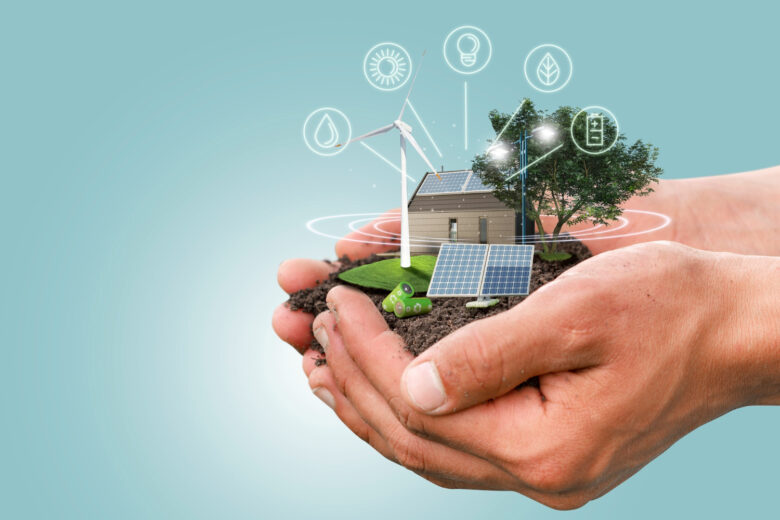The energy landscape is undergoing a dramatic transformation. While renewable sources like solar and wind have gained significant traction over the past decade, emerging technologies are now poised to revolutionize how we harness, store, and distribute clean energy. From artificial intelligence optimizing power grids to breakthrough materials making solar panels more efficient, innovation is accelerating the transition to a sustainable energy future. This shift isn’t just about environmental responsibility—it’s reshaping entire industries and creating unprecedented opportunities for economic growth.
Current State of Renewable Energy
Renewable energy has reached a critical tipping point. Solar and wind power now represent the cheapest sources of electricity in most parts of the world, with costs dropping by over 80% in the last decade. Global renewable capacity exceeded 3,000 gigawatts in 2023, accounting for nearly 30% of total electricity generation. Countries like Denmark generate more than half their electricity from wind, while Costa Rica runs almost entirely on renewable sources. Despite this progress, challenges remain. Intermittency issues, storage limitations, and grid infrastructure constraints continue to hinder widespread adoption. Emerging technologies uniquely position themselves to solve the bottlenecks created by the variable nature of renewable sources, which traditional power systems struggle to accommodate.
Advanced Materials
Revolutionary materials are transforming renewable energy efficiency. Perovskite solar cells promise to boost photovoltaic efficiency beyond current silicon limitations, potentially reaching 40% efficiency rates compared to today’s 22% standard. These materials can be printed onto flexible surfaces, opening possibilities for solar integration into building facades, vehicles, and even clothing. Meanwhile, advanced wind turbine blades made from carbon fiber composites are becoming lighter and more durable, allowing turbines to capture energy from lower wind speeds. Floating solar panels using specialized polymers are expanding installation possibilities to water bodies, while new coatings reduce maintenance requirements and increase panel longevity. These material innovations aren’t just incremental improvements—they’re fundamentally changing what’s possible in renewable energy deployment.
AI and Machine Learning
Artificial intelligence is optimizing renewable energy systems with unprecedented precision. Machine learning algorithms analyze weather patterns, energy demand, and grid conditions to predict optimal times for energy generation and distribution. Smart forecasting systems can predict solar and wind output days in advance, allowing grid operators to balance supply and demand more effectively. AI-powered maintenance systems monitor turbine performance in real-time, identifying potential failures before they occur and reducing downtime by up to 25%. Energy trading platforms use machine learning to automatically buy and sell renewable energy at optimal prices, maximizing returns for clean energy investments. These intelligent systems are transforming renewable energy from an unpredictable resource into a reliable, optimized power source.
Energy Storage Solutions
Next-generation storage technologies are solving renewable energy’s greatest challenge: intermittency. Lithium-ion battery costs have plummeted by 90% since 2010, making grid-scale storage economically viable. Newer technologies like solid-state batteries promise even greater energy density and safety. Flow batteries can store energy for weeks or months, perfect for seasonal storage needs. Compressed air storage systems use excess renewable power to compress air in underground caverns, releasing it to generate electricity when needed. Green hydrogen production uses surplus renewable energy to split water molecules, creating a clean fuel that can be stored indefinitely and used for transportation, heating, and industrial processes. These storage breakthroughs are eliminating the argument that renewable energy is too unreliable for baseload power.
Smart Grids
Intelligent grid systems are creating a more flexible and efficient energy infrastructure. Smart grids use digital technology to monitor electricity flows in real-time, automatically routing power where it’s needed most efficiently. Microgrids allow communities to operate independently during outages while seamlessly integrating with the larger power system. Vehicle-to-grid technology turns electric cars into mobile energy storage units, feeding power back into the grid during peak demand periods. Blockchain-based energy trading platforms enable peer-to-peer energy sales, allowing homeowners with solar panels to sell excess power directly to neighbors. These smart systems create a more resilient, democratic energy network where renewable sources can thrive.
Challenges and Opportunities
The renewable energy revolution faces both significant hurdles and enormous potential. Although initial infrastructure costs remain high, they are declining rapidly. Regulatory frameworks struggle to keep pace with technological advances, creating uncertainty for investors. Skills gaps exist as the workforce transitions from fossil fuel industries to renewable sectors. However, opportunities far outweigh challenges. The renewable energy sector already employs over 13 million people globally, with job growth accelerating. Energy independence reduces geopolitical risks and price volatility. Climate benefits become more urgent as extreme weather events increase. Emerging markets present massive growth potential as developing countries leapfrog fossil fuel infrastructure entirely.
The Clean Energy Transformation Ahead
The convergence of renewable energy and emerging technologies is creating an unstoppable momentum toward a clean energy future. Advanced materials, AI optimization, revolutionary storage solutions, and smart grids are eliminating the technical barriers that once limited renewable adoption. Economic incentives now strongly favor clean energy investments, while environmental necessity makes the transition inevitable. The question isn’t whether renewable energy will dominate—it’s how quickly the transformation will occur and who will lead it. The clean energy economy of tomorrow will best position organizations, governments, and individuals who embrace these emerging technologies today.
FAQs
1. What emerging technology will have the greatest impact on renewable energy?
Energy storage solutions, particularly battery technology and green hydrogen, are likely to have the most transformative impact by solving intermittency challenges that have limited renewable adoption.
2. How will AI improve renewable energy efficiency?
AI optimizes energy production by predicting weather patterns, managing grid loads, performing predictive maintenance, and automating energy trading to maximize efficiency and reduce costs.
3. When will renewable energy completely replace fossil fuels?
While timelines vary by region, most experts predict renewable sources will dominate electricity generation by 2040-2050, with complete fossil fuel replacement taking several additional decades.
4. What role do smart grids play in renewable energy adoption?
Smart grids enable better integration of variable renewable sources by intelligently managing electricity flows, reducing waste, and allowing bidirectional power flow from distributed energy resources.
5. How affordable will renewable energy become?
Renewable energy costs continue declining rapidly. Solar and wind are already the cheapest electricity sources in most markets, with emerging technologies expected to drive costs even lower.



